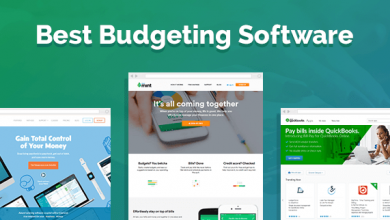6 Actionable SEO Tips You Can Implement Right Now

Launching an online business is an exciting milestone in your life. However, it’s important to stand out in the World Wide Web because it’s impossible to make money without money. How will your customers find you? These six tips will help you increase your Google rankings and traffic to your website.
1. Optimize page titles, meta descriptions, and headings
Search engines are designed to check page titles and descriptions in order to understand what your page is all about and rank it for various keywords. Therefore, you should ensure that each page has a unique title that helps both users and search engines understand what it’s about. The page title is one of the most important SEO factors.
Add your target keyword to the beginning of the page title to help search engines understand what keywords your page is targeting. However, this doesn’t mean that you should start stuffing keywords. If you can’t have keywords at the beginning, just make sure that the target keywords are part of the titles. On the other hand, your titles should be short and descriptive. You should also include power words and numbers in the title. Having power words such as “amazing, ultimate, checklist, actionable, etc.” make your titles more appealing, and this increases their Click Through Rate (CTR).
The page description is what searchers see in the SERPs (search engine results page). Therefore, the meta description should be descriptive and unique for each page. The meta description is a chance to advertise your pages and convince searchers to visit your page rather than clicking one of the other links. Add your keywords in the description and avoid using auto-generated descriptions. Adding your targeted keywords in the description makes the description more appealing and relevant to searchers.
2. Fix dead links
Dead links may be a result of a major site overhaul or redesign, or simply some typos or small oversights. Regardless of how dead or broken links happened, they are more than a nuisance. They confuse visitors and make it very difficult for them to view the information they need. They can also cause serious problems for search engine crawlers, and this means that your page will not be indexed properly, which negatively affects your SEO.
Before fixing dead links, you need to identify where the issues lie. You need to make a comprehensive list of all the dead links and fix them all at one time.
Although there are many ways of doing this, using Dr. Link Check is one of the easiest ones. Simply visit the Dr. Link Check homepage, enter your website’s URL and press the “Start Check” button. The tool will crawl your entire site and report the links that need your attention.
Fix any simple errors or typos. Sometimes, dead or broken links are caused by simple errors or typos. If there any such issues, fix them immediately.
3. Switch to HTTPS
Nowadays, HTTPS is essential for any website. Searchers want to see the padlock when entering their details; Firefox and Chrome mark sites that provide forms without HTTPS as non-secure. This is a ranking factor, and it has an impact on privacy. If your website is not HTTPS, the padlock symbol will not be displayed, and searchers may get a warning about the security of your website. Some of the layers of protection that HTTPS provides include encryption, data integrity, and authentication.
4. Review your call to action (CTA)
Your call to action tells visitors what to do. The CTA can be anything from finalizing a purchase to learning more about your services or products. The call to action relates to the content on your page and motivates people to take action on your content. A good CTA sends a clear message about all the benefits visitors get when they act. Therefore, your CTA must deliver your promises immediately. When you are writing your call to action, the words really matter.
When writing your call to action, you should:
- Use actionable words
- Focus on value
- Minimize risk
- Create scarcity and urgency
- Foster anticipation and curiosity
- Invite readers inside
- Avoid friction words
- Focus on value
- Show social proof and benefits
- Get personal
The best CTA uses scarcity and urgency to create fear of missing out, making it likely for visitors to take action.
5. Test and improve page load times
When most people visit a site that doesn’t load, they simply exit the tab and move on. Therefore, if your load times are slow, your site won’t rank high in search results, and the customer will have a negative experience. Your abandonment rate will increase, leaving unhappy customers.
You can test your website speed using tools like Pingdom. This will give you a report showing you where and how to improve the time-consuming process.
6. Make your page design responsive
Responsive design provides the best experience across various platforms, whether your visitors are browsing from their PCs, laptops, or smartphones. Your visitors use different screens to view content, and your content should respond to match their screen size.
Responsive design boosts the user experience across various devices. The design may look different on different devices, but the content and branding remain the same. Responsive design ensures minimal panning, zooming, scrolling, and confusion. Therefore, your visitors have an enjoyable experience, no matter what device they are using to view your website. Some of the steps you can take to make your website responsive include adopting a fluid grid, allowing for touch screens, deciding what elements to include on small screens, and deciding how images will be handles od small screens.




